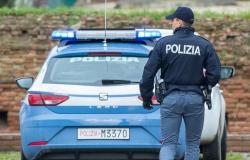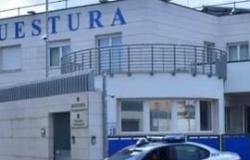
From yesterday Saturday 1st June the Monumental Complex of Pilotta in Parma is enriched with three new locations: L’Ancient Spezieria di San Giovanni Evangelista – ParmaThe Torrechiara Castle – Langhirano (Parma) and the Veleia Archaeological Park and Antiquarium – Lugagnano Val D’Arda (Piacenza). Starting from June 25th the visitor will have the opportunity to access all the locations of the Complex with a single ticket for 25 euros (with a visit to Pilotta on the day of purchase or booking and visit to the other sites within thirty days).
The expansion of the cultural offer was decided by the Ministry of Culture (MIC), which with the Ministerial Decree of 9 February 2024 made significant changes to the Decree of 23 December 2014, concerning the organization and functioning of state museums. The management of the venues will therefore pass from the Emilia-Romagna Regional Museums Directorate (DRM) to Pilotta, to guarantee administrative continuity. The Torrechiara Castle and the Veleia Archaeological Park and Antiquarium, regularly open to the public with the online ticketing and booking system, will pass under the management of the Pilotta Monumental Complex; while the Antica Spezieria will open to the public on June 24th, after the redevelopment works.
Ancient Spezieria of San Giovanni Evangelista – Parma
The first news on the existence of an apothecary in the abbey complex of San Giovanni Evangelista in Parma dates back to 1201, but its foundation could be even earlier, since the monastery was founded in 980 AD. It is probable that at first the apothecary was solely at the service of the Benedettini and only subsequently became public. The current arrangement, as regards the furnishings, dates back to the end of the 16th century and the first years of the following one, while the layout of the rooms underwent a radical change in 1766, when the Benedictines had to secularize the pharmacy to avoid the definitive closure imposed by the Bourbon minister Guglielmo Du Tillot. In 1896 the State acquired the premises, which, reopened to the public in 1951, contain a collection of mortars, albarelli, vases, stills and other objects coming from various institutions and private donations. Of the eight original rooms of the Spezieria, four remain today, the Fire Room, the Mortar Room, the Mermaid Room and finally the Well Room. All the environments take their name from the specificity of the contents or from the decorative elements that characterize them.
Ticket price: €3
Torrechiara Castle – Langhirano (Parma)
Located south of the city of Parma, in a hilly area of the Apennines that has been cultivated with vineyards for centuries, in a strategic position on a hill overlooking the valley below, Torrechiara Castle is one of the most notable examples of fortified architecture not only of Emilia-Romagna, but of all of Italy. Built between 1448 and 1460 as a residence and instrument of defense by Pier Maria Rossi, count of San Secondo, the fortress shows the influence of the Sforza-Visconti castles: built on a walled platform placed at the top of a terraced hill, it is composed of the manor, the ancient upper village, an internal courtyard, four corner towers and numerous underground rooms, which can now be visited after a recovery work concluded in 2006. The interior of the Castle is full of frescoed rooms, mainly with themes naturalistic, fantastic and grotesque. On the ground floor, the decorations of the rooms of Jupiter, of the Pergola, of the Victory, of the Velario are ascribed to Cesare Baglione; while the Hall of the Angels, with references to Correggio’s dome in the Cathedral of Parma, by an anonymous Parma artist from the first decades of the 1600s. On the upper floor is the large hall of the Acrobats, with frescoes again by Baglione and Giovan Antonio Paganino (last decades of the 16th century) and the most famous Golden Room (northeast tower), the bridal room which owes its name to the pure gold leaves that once covered the panels on the walls, frescoed between 1460 and 1462 by Benedetto Bembo (1420-25-1493?), or, according to recent attribution hypotheses, by the less well-known brother Gerolamo, with scenes of the ritual of chivalric love. In 2004 the BAP Superintendency of Emilia, which was in charge of the castle, oversaw a new layout, with the philological relocation of the surviving furnishings (including the bed with raised bed with wedding blanket, the table, the prayer bench, the chest) and the variation of the visit itinerary, which begins from here, as an introductory background to the fifteenth-sixteenth century rooms and the original Golden Chamber and testimony of the cultural climate of Parma at the beginning of the twentieth century.
Ticket price: €5
Archaeological Park and Antiquarium of Veleia – Lugagnano Val D’Arda (Piacenza)
The municipium of Veleia was founded following the Roman conquest of the 2nd century BC in the heart of the territory of the Ligurian tribe of the Veleates, on the site of the pre-existing indigenous centre. The city developed on a system of sloping terraces. The forum was built on an artificial shelf obtained with massive excavation. Paved in the times of Augustus by Lucius Licinius Priscus, an important local magistrate, it is surrounded on three sides by a portico onto which shops and public spaces opened. An imposing entrance allowed access from the lower terrace. On the opposite side the complex was closed by the basilica, where the twelve large marble statues of Luni stood, depicting the members of the Julio-Claudian family, today in the National Archaeological Museum of Parma. Upstream are the remains of the living quarters and a spa building. Cultural heritage of the region since 1760, when the Duke of Parma Don Filippo di Borbone began its exploration following the accidental discovery (in 1747) of the bronze inscription of the Tabula Alimentaria Traianea, Veleia is today one of the most important archaeological centers of the Northern Italy. The Antiquarium, recently reorganized, houses finds that illustrate the most significant moments in the history of Veleia.
Ticket price: €5 (from 25 June with entry quotas according to the methods that will be defined later).




